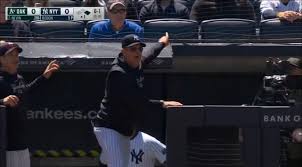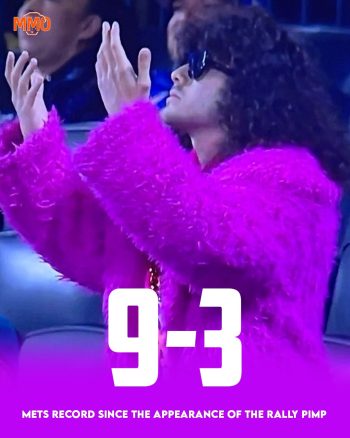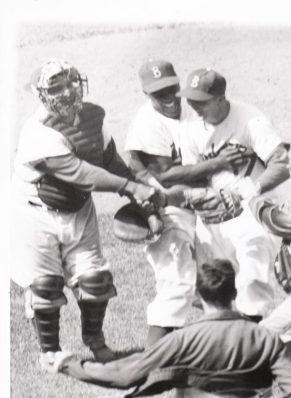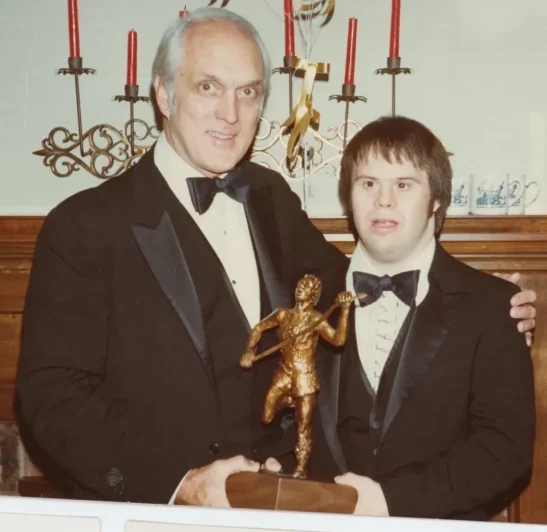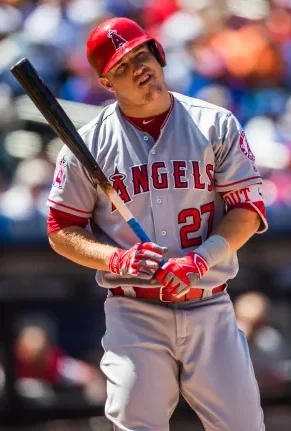
Another season, another unwanted injury for a star-crossed star.
Once upon a time, when cooler heads actually found a hearing in the Angels’ front office, the idea was floated to talk Mike Trout into moving out of center field and into one of the less demanding outfield positions. Maybe even moving him toward designated hitting for the majority of his time in due course, went a reasonable concurrent thought.
With Trout then coming away from some injury-disrupted seasons, they talked about it during the owners’ lockout of 2021-22. They planned to talk to Trout about it when the lockout ended. They didn’t bank on then-manager Joe Maddon blabbing about it to reporters before they had the chance to present it to Trout.
Idea killed before it could spend its first hour out of its crib. Maddon’s execution orders may have been written right there, awaiting only one false move on the season to stamp them irrevocably.
The guillotine blade dropped after those 2022 Angels went from a deceptive 27-17 start to a twelve-game losing streak. And, after Maddon ordered an intentional walk to the Rangers’ Corey Seager with the bases loaded and the Angels down. Just as inexplicably, the Angels overthrew a wider deficit to win that game at the witching hour. It wasn’t enough to save Maddon’s rep or his kishkes.
But the busted Trout plan probably did make it a matter of when and not if the Angels would purge Maddon. The plan might also have kept Trout from inflicting any further great risk upon a body that simply refuses to cooperate with its owner’s iron will.
We may never know whether a leftfielder named Mike Trout or a right fielder named Mike Trout would have managed to avoid some of what bedeviled him from that point forward. 2022: Five weeks on the injured list with a back issue that might yet bear the potential of putting paid to his career. Last season: Hamate bone fracture in July, one game in August, season lost otherwise.
Now we have a spectre that’s only too familiar to baseball world as a whole and Angel fans in particular: Trout on the injured list, about to undergo surgery for a torn meniscus in his knee. Expected to be out anywhere from eight to twelve weeks. Exactly what triggered the tear isn’t quite known, but we do know that Trout felt it go while walking back to the Angels’ dugout.
Even though he said, “It’s just frustrating. But we’ll get through it,” we can’t really know the precise thoughts and feeling that poured into his heart and mind when he noticed the tear and resigned himself to yet another injured list term. If he’s telling himself, “This is getting to be more ridiculous than a contemporary presidential campaign,” there isn’t a jury on earth that would convict him of warped thinking.
Until that injury, Trout spent the season’s first month doing whatever he could to prove he still had what made him both the single most outstanding player of the 2010s and, concurrently, the number five all-around center fielder who ever played the game.
His hitting average was an anemic .220 and pulled his lifetime number down to .299, but even at this writing he leads the Show with ten home runs, while exactly half his 24 hits have been for extra bases. He’s even stolen six bases, something he’d said he wanted to return to doing after letting that side of his run-making game expire after 2019.
According to my Real Batting Average metric (total bases + walks + intentional walks + sacrifice flies + hit by pitches), Trout was actually batting .611 before his knee said not-so-fast. Little by little, piece by piece, he put himself back together into a semblance of his 2010s self when disaster decided it was time to speak up. Again.
For his first eight full seasons, Trout’s ability to post wasn’t even a topic. He’d averaged 145 games a year over the eight, and he did things the best players do in their fantasies. After the pan-damn-ically short 2020, his body became an orthopedic experiment. And all he’d ever done wrong was play the game firmly.
He’s also been loyal to a fault to an organisation administered like the Mad Hatter’s tea party, overseen and often overlorded by an owner whose fortune came from marketing but who hasn’t yet figured truly that marketing doesn’t build winning baseball teams.
The Angels had two generational talents, Trout and Shohei Ohtani. The latter took the first available hike as a free agent. The former insists he wants to be around when the Angels return to a winning culture and even a postseason or two. But the Angels’ administration still hasn’t figured out how to restore that culture. And, may not for the rest of Trout’s career—however long his body allows him to have one.
Trout could retire this instant and his Hall of Fame plaque would be prepared for his first-ballot election. That might still outrage fans who still cling to the idiocy that injuries are signs of moral turpitude and character weakness. Those fans should be dismissed.
“It’s not as though he has a singular chronic issue,” writes The Athletic‘s Sam Blum. “They’re all independent of each other, and seemingly haven’t impacted him beyond the duration of their individual recoveries. But they add up to the same problem: an all-time legend who can now no longer stay on the field.”
Trout is still good enough that, as FiveThirtyEight says, “the cost to the Angels of losing him for only a couple of months would be on par with season-ending injuries suffered by other star players.” Indeed.
Almost promptly, the Angels signed veteran Kevin Pillar as a fourth outfielder. Once a good center field defender, he’d be behind Mickey Moniak now despite Moniak’s modest bat. Pillar cleared waivers after the White Sox designated him for assignment. He’s considered good in the clubhouse and has a relationship with Angels manager Ron Washington from Atlanta, where Pillar played last year while Washington was the Braves’ third base coach.
Pillar will cost the Angels nothing more than a prorated major league minimum salary. That’s the least of their losses. Losing Trout—again—costs them something no dollars can replace. But imagine what it’s costing Trout in his mind and heart. Again.


